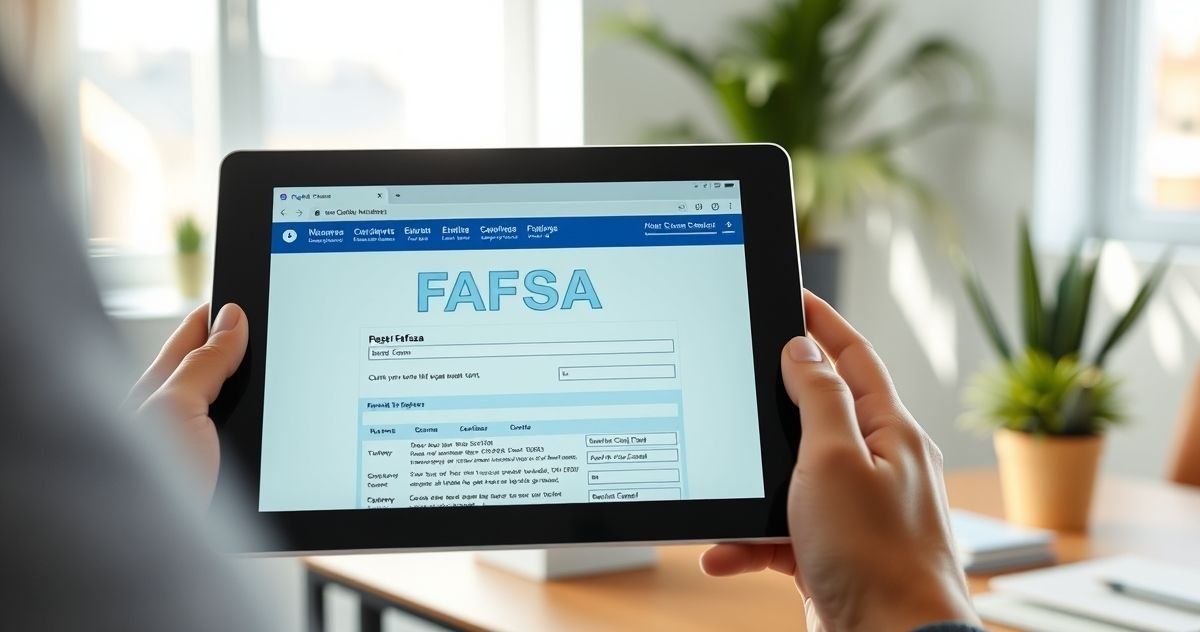How Does the FAFSA Determine Financial Aid?
The FAFSA collects information about the student’s and their family’s finances, including income, assets, and benefits. The U.S. Department of Education uses this information to calculate the Student Aid Index (SAI). The SAI is an index number used by college financial aid offices to determine the types and amounts of financial aid a student is eligible to receive.
Here is a step-by-step breakdown of the process:
- Submit the FAFSA: The student and their contributors (such as parents or a spouse) complete and sign the application at StudentAid.gov.
- SAI Calculation: The Department of Education processes the application and calculates the Student Aid Index. A lower SAI indicates a greater financial need, potentially qualifying the student for more need-based aid.
- Colleges Receive Data: The FAFSA results are sent to the schools listed on the application.
- Receive Aid Offers: Each college’s financial aid office creates a financial aid package based on the student’s SAI and the school’s cost of attendance. This offer outlines the combination of grants, scholarships, loans, and work-study available.
This process reflects changes from the FAFSA Simplification Act, which replaced the previous Expected Family Contribution (EFC) with the Student Aid Index for the 2024–2025 award year and beyond.
Who Should Complete the FAFSA?
Nearly every student planning to attend a college, university, or career school should fill out the FAFSA. A common misconception is that a family’s income might be too high to qualify for aid. However, the FAFSA is the gateway to more than just need-based grants.
All students who complete the FAFSA are evaluated for eligibility for:
- Federal Grants: Aid, such as the Pell Grant, that does not need to be repaid and is typically awarded based on significant financial need.
- Federal Work-Study: A program that provides part-time jobs for students, allowing them to earn money for education expenses.
- Federal Student Loans: The FAFSA is required to receive federal loans, including Direct Unsubsidized Loans, which are available regardless of financial need. Federal loans offer benefits like fixed interest rates and income-driven repayment plans that are not available with private loans.
- State and Institutional Aid: Most states and colleges use FAFSA data to award their own grants and scholarships, some of which may be merit-based.
Tips for a Smooth FAFSA Application
Filing the FAFSA can be straightforward if you prepare ahead of time. Follow these tips to avoid common delays.
- Create Your FSA ID Early: The student and all contributors (anyone required to provide information on the FAFSA) must each have their own StudentAid.gov account, also known as an FSA ID, to sign the form electronically. Set these up at least a week before you plan to file.
- Know Your Deadlines: You must manage three types of deadlines: federal, state, and college. Many aid programs are first-come, first-served, so file as early as possible. The FAFSA typically opens in December for the following academic year.
- List All Potential Schools: You can add up to 20 schools to your FAFSA. Include every school you are considering, even if you haven’t applied yet.
- Double-Check for Errors: Simple typos, such as an incorrect Social Security number or date of birth, can cause significant processing delays. Review every entry before submitting.
- Ensure All Signatures are Complete: The application is not complete until it has been signed by the student and all required contributors.
Frequently Asked Questions (FAQs)
Do I need to file the FAFSA every year?
Yes. Eligibility for financial aid is determined annually. You must submit a new FAFSA for each year you plan to attend school to continue receiving aid.
What if my family’s financial situation has changed since we filed taxes?
If your family has experienced a job loss, significant income reduction, or other major financial changes, you can request a “professional judgment” review. Contact the financial aid office at your school to explain your circumstances, as they may be able to adjust your aid package.
Is the CSS Profile the same as the FAFSA?
No. The CSS Profile is a separate, more detailed financial aid application used by approximately 200 private colleges and universities to award their own institutional funds. It is not free and is not a substitute for the FAFSA. Check each college’s website to see if they require it in addition to the FAFSA.
External Resources:
For more detailed information and to start your application, visit the official government website: Apply for Aid with the FAFSA® Form.
Source: Information is based on guidelines from the U.S. Department of Education at StudentAid.gov.



